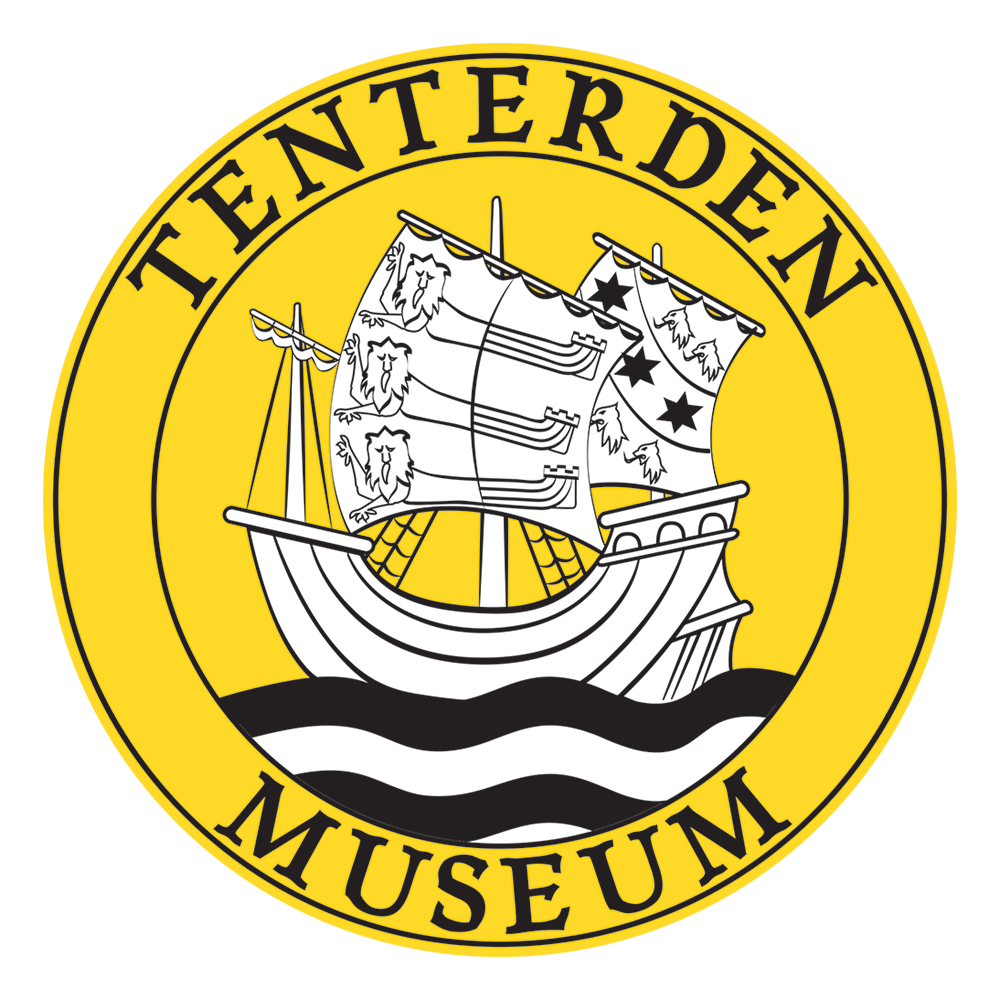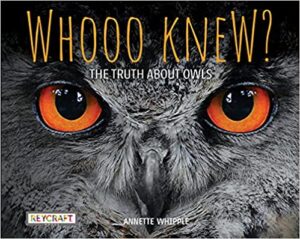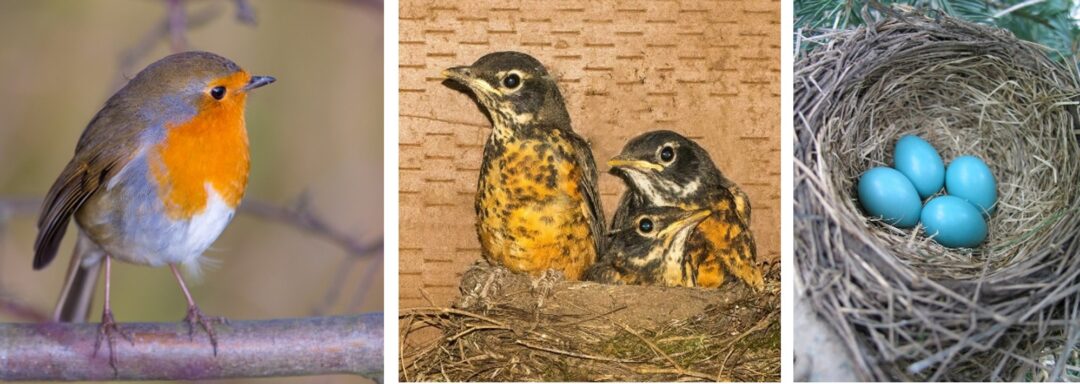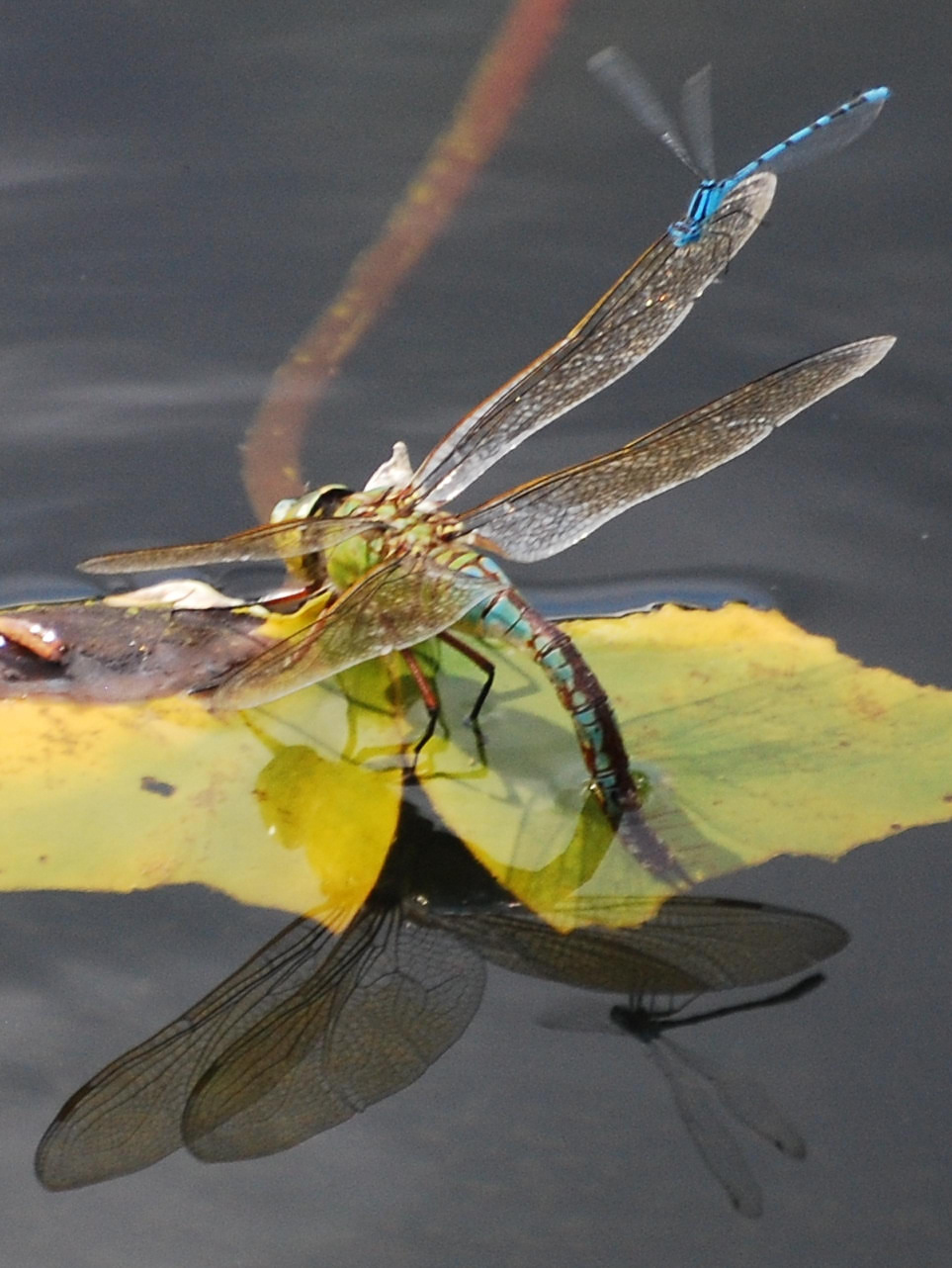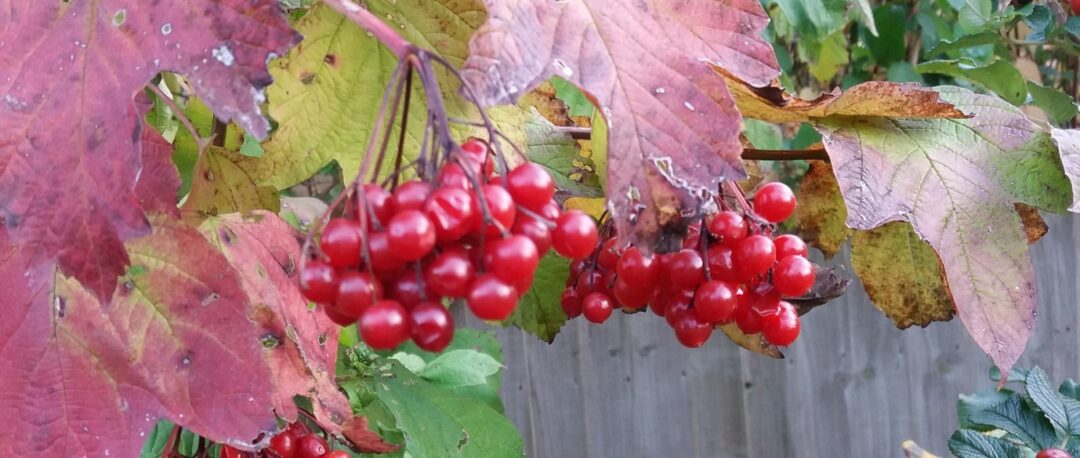
What’s in a name?
The barn owl’s Latin name is Tyto alba. White owl is the translation.
The owl is a native bird and was named by the Anglo-Saxons, in the early medieval period between c.AD600-1000, as an ule, which is an imitation of the noise that the bird makes. Quite often the names of birds tell you something about either the nature, the habits, the sound or the appearance of a bird.
The owl is associated with wisdom. In literature and classical myth the owl is associated with wisdom. The Greek goddess Athena is often portrayed with an owl.
A wise old owl lived in an oak.
The more he heard the less he spoke.
The less he spoke the more he heard.
If only we could be like this wise bird.
Anonymous
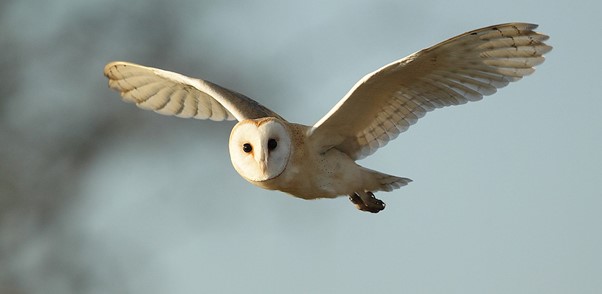
Vital Statistics
Length: 33-39cm Wingspan: 80-95cm Weight: 250-360g
Females are larger than males at around 360g (males usually weigh around 330g) although during the early breeding season females may weigh as much as 425g before egg laying.
The barn owl has a buff and silver grey back which is speckled and a pure white underside. Its face is heart-shaped with large black eyes and a hooked beak.
Diet
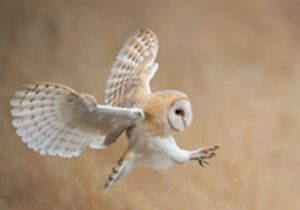 Mice, voles, shrews and some larger mammals and small birds.
Mice, voles, shrews and some larger mammals and small birds.
Starvation is the greatest cause of mortality in owls. Wet weather can prevent flight, and severe weather conditions results in the owls not being able to hunt. Young birds are most at risk just after they have fledged.
Barn owls are not long lived birds – the average life expectancy is four years, but many die at about eighteen months.
Breeding
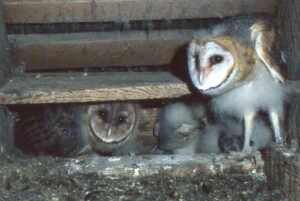
Barn owls breed when there is a good food supply, which is usually between March and August.
They nest in the cavities of old barns and buildings, as well as the hollows of trees. Their nests are built on top of the pellets and debris of previous nests. Around 4-6 eggs are laid, hatching just over a month later. Chicks are ready to fledge at around two months old.
Habitat
Rough grassland with a thick tussocky mix of grass species and at least seven centimetres of ‘litter’ is ideal. ‘Litter’ is the decaying grass or plants from the previous year’s growth that has died back and which the new grass has grown through. The ‘litter’ provides good living conditions for field voles and other small mammals that the owls feed on.
Cattle grazing is often the best form of management as long as the land is not overgrazed for that would destroy the ‘litter’ layer. Low density cattle grazing can be more climate friendly than mowing.
Rough grassland is better than hay meadows as it provides a better environment for insects and birds than a hay meadow. In a large rural garden there is often room for a patch of permanent rough grass. On farms, odd corners of land that are difficult to access by machine can be left for rough grass.

New woodlands, due to the rough grass that develops between the young trees, are often beneficial to barn owls for about the first seven years,
If the land is near busy roads, high hedges are best as this would mean fewer fatalities on the road as owls fly low to catch their prey. Low branches on the verges are also helpful.
Old, mature trees provide prime nesting opportunities, as do farm buildings.
Interesting observations
Barn owls are birds of prey and hunt in the twilight or dawn light, and at night. They have evolved to do this and have special adaptations. Their heart-shaped faces direct high-frequency sounds to their ears, which are set at slightly different heights, allowing them to pinpoint their prey. Their hearing is exceptional and allows them to track down their prey as they fly low to the ground, silently gliding over open habitats. Once they’ve located their prey, they hover overhead then swoop down, grab it with their talons and eat it whole. They then spit out pellets that are composed of the bits of their prey that they cannot digest. If you dissect an owl’s pellets, you can see what it has eaten.
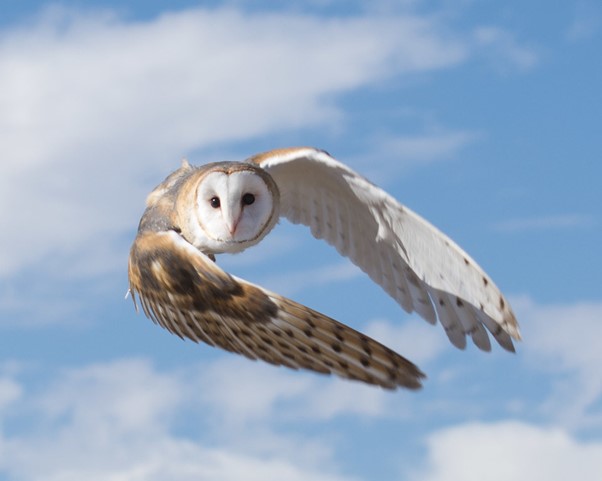
Folklore
The barn owl’s screech has led to it being considered a bird of ill omen. Its nicknames are: ghost owl, church owl, screech owl and demon owl. Their association with darkness reinforces this superstition. People believed that the screech or call of an owl flying past the window of a sick person meant imminent death, the owl calling the person’s name. In parts of northern England to see an owl is good luck!
The barn owl has also been used to predict the weather. A screeching Owl meant cold weather or a storm was coming. If heard during foul weather, a change in the weather was at hand.
Among early English folk cures, alcoholism was treated with owl egg. The imbiber was prescribed raw eggs; a child given this treatment was thought to gain lifetime protection against drunkenness.
Owls’ eggs, cooked until they turned into ashes, were also used as a potion to improve eyesight.
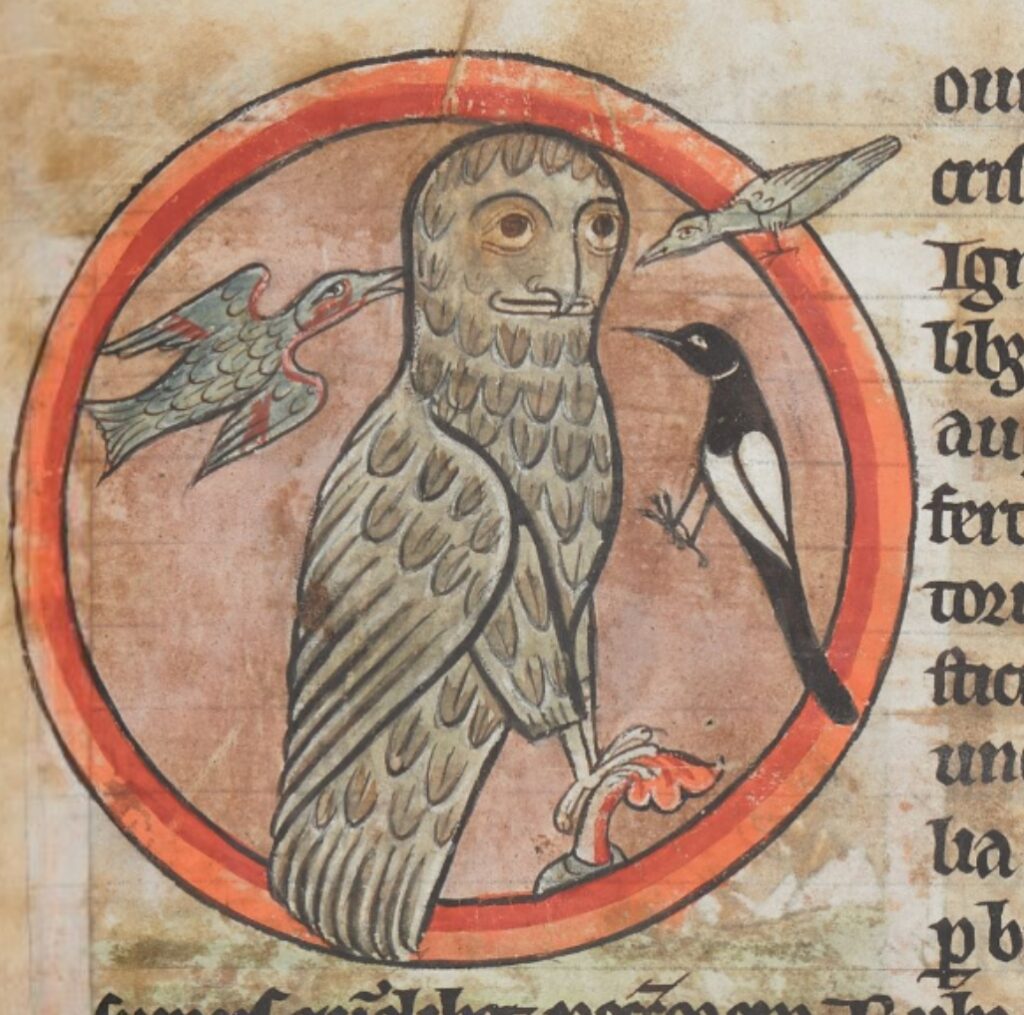
Things to do
The Barn Owl trust site is full of interesting information and well worth exploring. There are lots of activities here for children and adults, including: amazing facts, colouring pages, stories, and lesson plans that range from art to zoology! Dissecting pellets makes a fascinating study of diet.
Barn Owl Trust https://www.barnowltrust.org.uk/owl-facts-for-kids/
You might like to sketch this owl, or one of the other owls that you have seen.

Writing an owl poem – questions to consider:
- How does this dramatic photograph of a barn owl in flight in the dark make you feel?
- What do you think the owl is thinking?
- What do you think the owl is seeking?
- What do you think that the air feels like against its wings?
- What do you think are the footprints that the owl makes in the air?
Write an acrostic poem using one of the following words or phrases:
- Barn owl
- Determined
- Flight
- Footprints in the air
This is a fabulous website https://xavibou.com/about-xavi-bou/ Ornithographies introduces some amazing art.
Create a spell to perform about the owl. You might use some of these alternative names: white owl, silver owl, demon owl, night owl, delicate owl, hobby owl, church owl, ghost owl, death owl, golden owl, straw owl, dobby owl, stone owl, hissing owl, scratch owl, hobgoblin.
Exercise from: The Lost Words https://www.thelostwords.org/uploads/Winter%20Resources.pdf
Write a story featuring a ghost owl, concentrating on how to build up atmosphere through evocative use of detail. Think about characters, setting and the plot, visualizing and planning them out before you start writing.
Exercise from: The Lost Words
It is a sad fact that barn owls often drown in water troughs or high sided water buckets. A simple practical solution to avoid this is contained in this video made by the Barn Owl Trust: https://www.barnowltrust.org.uk/hazards-solutions/water-troughs-barn-owls/
Information on nest boxes: where to locate, how to make, types to buy. https://www.barnowltrust.org.uk/barn-owl-nestbox/
Books to Read
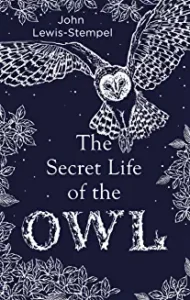
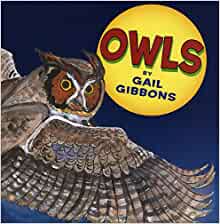
Bibliography
Barn Owl Trust https://www.barnowltrust.org.uk/barn-owl-facts/
G.W.C.T. Farming https://www.gwct.org.uk/farming/big-farmland-bird-count/farmland-birds-to-count/barn-owl
Natural History Museum https://www.nhm.ac.uk/discover/barn-owl-tyto-alba.html
RSPB https://www.rspb.org.uk/birds-and-wildlife/wildlife-guides/bird-a-z/barn-owl/
The Lost Words https://www.thelostwords.org/uploads/Winter%20Resources.pdf
Wildlife Trusts https://www.wildlifetrusts.org/wildlife-explorer/birds/birds-prey/barn-owl
Woodland Trust https://www.woodlandtrust.org.uk/trees-woods-and-wildlife/animals/birds/barn-owl/
